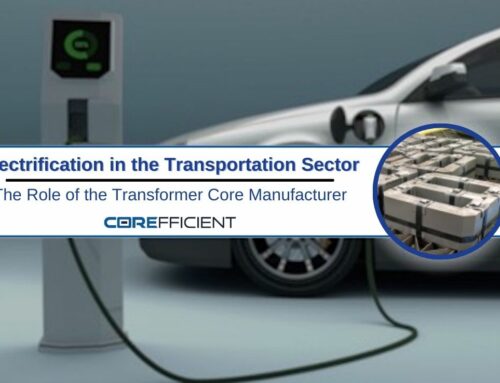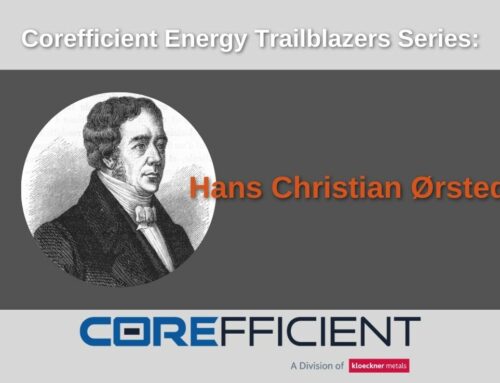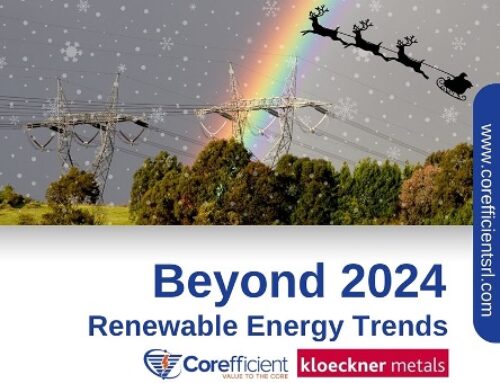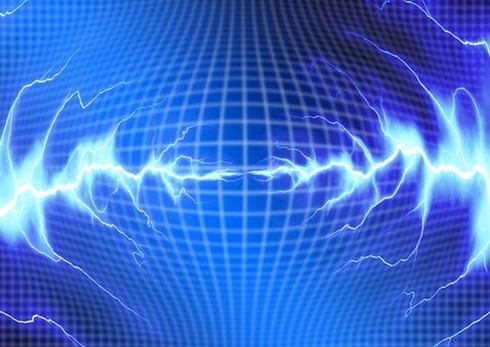
An integral part of any electric grid are its electrical transformers. As the name implies, the role of transformer cores is to convert or “transform” incoming voltage into a desirable outgoing voltage. The energy may be stepped up to higher voltages or stepped down to lower voltages. An example of when energy would need to be stepped up is when it’s going to travel long distances, as this increases the efficiency. Then, as the energy goes from the power lines into residential homes, it would be stepped down before going into the breaker box. To accomplish these tasks, electric transformers can be as large as buildings or as small as cellphones.
There are many important characteristics that should be considered when manufacturing transformers. Key among these is reducing energy loss occasioned by the energy transfer.
About Transformers: The Core
The center of a transformer is called the core. Here, the electricity flows through a primary winding creating a magnetic flux. As the magnetic field cuts through the secondary winding, the secondary winding picks up the voltage. The power is stepped-up or down in relation to the amount of turns of each winding. More turns on the secondary winding, and the voltage increases. Less turns, and it decreases.
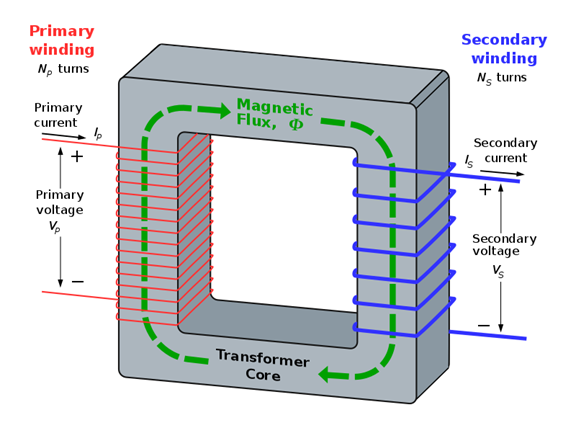
More About Transformer Cores: Types of Transformer Cores
The two primary types of transformer cores are shell type and core type. In shell type cores, the cores surround the winding. In contrast, core type is characterized by the windings surrounding the core, as can be seen in the graphic below.
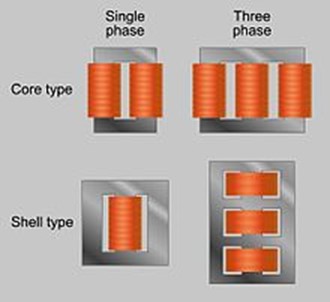
Core type configurations are used for high voltage/high power needs. Although their power losses tend to be higher, the windings in core type are readily available and so maintenance is easier than in shell type transformers. Finally, because in core type transformers the windings are placed on separate legs, more copper is required in the manufacturing of core type transformers.
On the other hand, shell type cores are used for lower power applications. They have less energy losses, but maintenance is harder because the windings are harder to reach. The better energy containment is due to the windings being closer to each other and the magnetic flux having a closed path around the coils on which to travel. In contrast to the core type, shell type transformers allow for natural cooling. The mechanical strength of shell type transformers is also higher.
About Transformer Cores: Transformer Core Manufacturing
The coupling, or electromagnetic connection between the two windings, must be set up well to prevent loss. In addition, the layers of steel that make up the core’s structure should be as permeable as possible to conduct the magnetic flux from one winding to the other. Stacking layers of thin lamination, rather than a core built from one solid piece, has the effect of reducing eddy currents and heating.
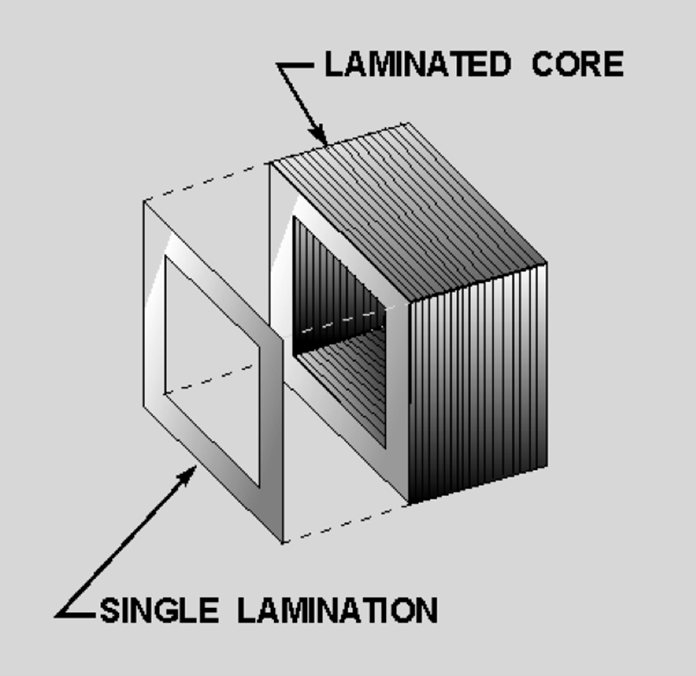
Different parts of an electrical transformer are made of different materials. Windings are usually made of copper or aluminum, while the laminations are made of steel, often silicon steel. Cores can also be made of iron, amorphous metals, and ferrite ceramics, among others.
As efficiency regulations become stricter, demand increases for conventional grain-oriented and high permeability electrical steels, and worldwide strategic sourcing becomes fundamental. To meet these demands, Corefficient has secured sourcing for conventional CRGO, HiNB, and laser scribed materials, amongst others.
About Transformer Cores: Testing at Corefficient
Nothing will guarantee energy efficient cores more than stringent testing at every phase of the process, from raw material to final product. At Corefficient, multiple rounds of stringent material testing guarantee that only the best materials make it into the final product. Corefficient employs multiple testing methods, including Dimensional testing, Franklin testing, and Epstein testing, Collectively, these methods test various properties of the coils and materials used in the cores, including surface insulation resistance, weldability, magnetic properties (permeability, flux density, and core loss), and consistency of material width and thickness.
About Transformer Cores: Design at Corefficient
The big question at this point is how do you achieve the mandated efficiency for a transformer that meets the power requirements, electrical standards, physical space constraints, and heat rise requirements, all while providing a cost-effective product in the marketplace? For Corefficient, the answer is simple: core design!
Corefficient has electrical engineers anticipating all these variables for our customers. Once the design is settled, Corefficient has the proven experience to translate a customer’s core design through the coil cutting, lamination assembly, no-load testing, packaging, and delivery services. We pride ourselves on bringing high expectations to reality. Our experience ensures that a customer’s design requirement is obtained by utilizing the optimal grade of electrical steel. Through cutting and construction, we minimize destruction factors providing a finished transformer core design that meets and exceeds customer specifications.
About Transformer Cores: Energy Efficient Transformer Cores
As the world progresses and focuses on green energy, transformer core efficiency no longer becomes just a prospect of saving energy and money, but also about creating a sustainable future. With renewable energy as the source, the role of transformers is to reduce loss as much as possible. With the energy grid becoming more decentralized and modern, transformer core design must adapt to allow for two-way currents, active energy measurements, and energy storage units that will become part of the energy grid.
Fortunately, as transformers work to adapt themselves to the new sustainable technologies, new synergies are created that improve all transformers. For example, new energy efficient transformer cores are being developed that do not need maintenance so that they can be installed as underwater transformers. These new core designs, propelled by the need for better underwater transformers, will eventually reduce the maintenance needed on cores everywhere.
About Corefficient
Based out of Monterrey, Mexico, Corefficient is a eco-friendly transformer core company committed to adding value to their transformer core products. Their experience and success in the fields of transformer core engineering, transformer core design, magnetic core expertise, hot and cold rolled steel, grain-oriented steel, electrical steel, and – most importantly – customer service – have made Corefficient a valued leader in energy efficient transformer core manufacturing.
Visit Corefficient online @corefficientsrl.com, contact our North American sales engineer at 1(704) 236-2510 or call us directly in Monterrey, México at (81) 2088-4000.

